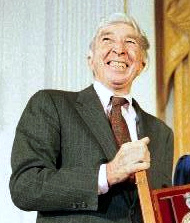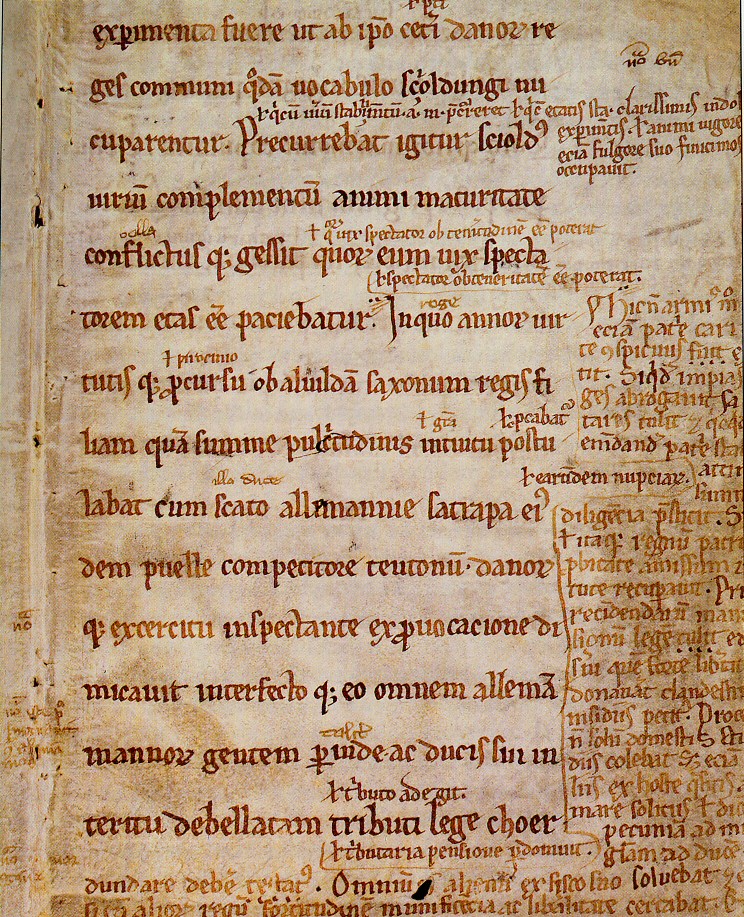|
Gertrude And Claudius
''Gertrude and Claudius'' is a novel by John Updike. It uses the known sources of William Shakespeare's ''Hamlet'' to tell a story that draws on a rather straightforward revenge tale in medieval Denmark, as depicted by Saxo Grammaticus in his twelfth-century '' Historiae Danicae''. It also incorporates extra plot elements added by François de Belleforest in his ''Histoires tragiques'', published in 1576, and furthermore brings in various elements from Shakespeare's play itself, including the name "Corambis" for Polonius from the "bad quarto" of 1603. This story, in its three forms, is primarily concerned with Hamlet (or "Amleth" in Saxo) avenging his father's murder, but the story starts earlier. The novel is concerned with that earlier life of Gertrude, Claudius, and old Hamlet, and it ends at the close of Act I, scene ii of ''Hamlet''. The characters have different names in Saxo, Belleforest, and Shakespeare (e.g. Gerutha, Geruthe, Gertrude), and the novel, in three parts, mod ... [...More Info...] [...Related Items...] OR: [Wikipedia] [Google] [Baidu] |
John Updike
John Hoyer Updike (March 18, 1932 – January 27, 2009) was an American novelist, poet, short-story writer, art critic, and literary critic. One of only four writers to win the Pulitzer Prize for Fiction more than once (the others being Booth Tarkington, William Faulkner, and Colson Whitehead), Updike published more than twenty novels, more than a dozen short-story collections, as well as poetry, art and literary criticism and children's books during his career. Hundreds of his stories, reviews, and poems appeared in ''The New Yorker'' starting in 1954. He also wrote regularly for ''The New York Review of Books''. His most famous work is his "Rabbit" series (the novels ''Rabbit, Run''; ''Rabbit Redux''; ''Rabbit Is Rich''; ''Rabbit at Rest''; and the novella ''Rabbit Remembered''), which chronicles the life of the middle-class everyman Rabbit Angstrom, Harry "Rabbit" Angstrom over the course of several decades, from young adulthood to death. Both ''Rabbit Is Rich'' (1981) and ''Ra ... [...More Info...] [...Related Items...] OR: [Wikipedia] [Google] [Baidu] |
Chip Kidd
Charles Kidd (born 1964) is an American graphic designer known for Cover art, book covers. Early childhood Born in Shillington, Pennsylvania, Shillington in Berks County, Pennsylvania, Kidd grew up being fascinated and heavily inspired by American popular culture. Comic books were his gateway into graphic design, with Batman and Superman populating some of his earliest childhood memories. Kidd attended Pennsylvania State University, where he graduated in 1986 with a degree in graphic design. Career Throughout his career, Kidd has been a graphic designer, book designer, editor, author, lecturer and musician. According to Graphic Design: American Two, he has been credited with “helping to spawn a revolution in the art of America book packaging in the last ten years.” One of the most consistent characteristics of Kidd's style is the fact that his book covers don't carry one signature look, as he states: “A signature look is crippling… [because] the simplest and most eff ... [...More Info...] [...Related Items...] OR: [Wikipedia] [Google] [Baidu] |
Alfred A
Alfred may refer to: Arts and entertainment *'' Alfred J. Kwak'', Dutch-German-Japanese anime television series * ''Alfred'' (Arne opera), a 1740 masque by Thomas Arne * ''Alfred'' (Dvořák), an 1870 opera by Antonín Dvořák *"Alfred (Interlude)" and "Alfred (Outro)", songs by Eminem from the 2020 album '' Music to Be Murdered By'' Business and organisations * Alfred, a radio station in Shaftesbury, England * Alfred Music, an American music publisher * Alfred University, New York, U.S. * The Alfred Hospital, a hospital in Melbourne, Australia People * Alfred (name) includes a list of people and fictional characters called Alfred * Alfred the Great (848/49 – 899), or Alfred I, a king of the West Saxons and of the Anglo-Saxons Places Antarctica * Mount Alfred (Antarctica) Australia * Alfredtown, New South Wales * County of Alfred, South Australia Canada * Alfred and Plantagenet, Ontario ** Alfred, Ontario, a community in Alfred and Plantagenet * Alfred Island, Nunavu ... [...More Info...] [...Related Items...] OR: [Wikipedia] [Google] [Baidu] |
William Shakespeare
William Shakespeare ( 23 April 1564 – 23 April 1616) was an English playwright, poet and actor. He is widely regarded as the greatest writer in the English language and the world's pre-eminent dramatist. He is often called England's national poet and the "Bard of River Avon, Warwickshire, Avon" or simply "the Bard". His extant works, including William Shakespeare's collaborations, collaborations, consist of some Shakespeare's plays, 39 plays, Shakespeare's sonnets, 154 sonnets, three long narrative poems and a few other verses, some of uncertain authorship. His plays List of translations of works by William Shakespeare, have been translated into every major modern language, living language and are performed more often than those of any other playwright. Shakespeare remains arguably the most influential writer in the English language, and his works continue to be studied and reinterpreted. Shakespeare was born and raised in Stratford-upon-Avon, Warwickshire. At the age of 18 ... [...More Info...] [...Related Items...] OR: [Wikipedia] [Google] [Baidu] |
Hamlet
''The Tragedy of Hamlet, Prince of Denmark'', often shortened to ''Hamlet'' (), is a Shakespearean tragedy, tragedy written by William Shakespeare sometime between 1599 and 1601. It is Shakespeare's longest play. Set in Denmark, the play (theatre), play depicts Prince Hamlet and his attempts to exact revenge against his uncle, King Claudius, Claudius, who has murdered Ghost (Hamlet), Hamlet's father in order to seize his throne and marry Gertrude (Hamlet), Hamlet's mother. ''Hamlet'' is considered among the "most powerful and influential tragedies in the English language", with a story capable of "seemingly endless retelling and adaptation by others." It is widely considered one of the greatest plays of all time. Three different early versions of the play are extant: the Hamlet Q1, First Quarto (Q1, 1603); the Second Quarto (Q2, 1604); and the First Folio (F1, 1623). Each version includes lines and passages missing from the others. Many works have been pointed to as possible s ... [...More Info...] [...Related Items...] OR: [Wikipedia] [Google] [Baidu] |
Saxo Grammaticus
Saxo Grammaticus (), also known as Saxo cognomine Longus, was a Danish historian, theologian and author. He is thought to have been a clerk or secretary to Absalon, Archbishop of Lund, the main advisor to Valdemar I of Denmark. He is the author of the , the first full history of Denmark, from which the legend of Amleth would come to inspire the story of '' Hamlet'' by Shakespeare. Life The '' Jutland Chronicle'' gives evidence that Saxo was born in Zealand. It is unlikely he was born before 1150 and it is supposed that his death could have occurred around 1220. His name Saxo was a common name in medieval Denmark. The name ''Grammaticus'' ("the learned") was first given to him in the ''Jutland Chronicle'' and the ''Sjælland Chronicle'' makes reference to Saxo ''cognomine Longus'' ("with the byname 'the tall). He lived in a period of warfare and Danish expansion, led by Archbishop Absalon and the Valdemars. The Danes were also being threatened by the Wends who were making r ... [...More Info...] [...Related Items...] OR: [Wikipedia] [Google] [Baidu] |
Gesta Danorum
("Deeds of the Danes") is a patriotic work of Danish history, by the 12th-century author Saxo Grammaticus ("Saxo the Literate", literally "the Grammarian"). It is the most ambitious literary undertaking of medieval Denmark and is an essential source for the nation's early history. It is also one of the oldest known written documents about the history of Estonia and Latvia. Consisting of sixteen books written in Latin on the invitation of Archbishop Absalon, describes Danish history and to some degree Scandinavian history in general, from prehistory to the late 12th century. In addition, offers singular reflections on European affairs in the High Middle Ages from a unique Scandinavian perspective, supplementing what has been handed down by historians from Western and Southern Europe. Books The sixteen books, in prose with an occasional excursion into poetry, can be categorized into two parts: Books 1–9, which deal with Norse mythology and semi-legendary Danish histor ... [...More Info...] [...Related Items...] OR: [Wikipedia] [Google] [Baidu] |
François De Belleforest
François de Belleforest (1530 – 1 January 1583) was a French writer, poet and translator of the Renaissance. He was born in Samatan, into a poor family, and his father (a soldier) was killed when he was seven. He spent some time in the court of Marguerite of Navarre, traveled to Toulouse and Bordeaux (where he met George Buchanan), and then to Paris where he came into contact with members of the young literary generation, including Pierre de Ronsard, Jean Antoine de Baïf, Jean Dorat, Remy Belleau, Antoine Du Verdier and Odet de Turnèbe. In 1568 he became historiographer to the king. He died in Paris. Belleforest wrote on cosmography, morals, literature and history, and he translated the works of Matteo Bandello, Boccaccio, Antonio de Guevara, Lodovico Guicciardini, Polydore Vergil, Saint Cyprian, Sebastian Münster, Achilles Tatius, Cicero and Demosthenes into French. He is also the author of the first French pastoral novel, ''La Pyrénée'' (or ''La Pastoral ... [...More Info...] [...Related Items...] OR: [Wikipedia] [Google] [Baidu] |
Ur-Hamlet
The ''Ur-Hamlet'' (the German prefix ''wikt:ur-, Ur-'' means "original") is a play by an unknown author, thought to be either Thomas Kyd or William Shakespeare. No copy of the play, dated by scholars to the second half of 1587, survives today. The play was staged in London, more specifically at The Theatre in Shoreditch as recalled by Elizabethan author Thomas Lodge. It includes a character named Hamlet; the only other known character from the play is a ghost who, according to Thomas Lodge in his 1596 publication ''Wits Misery and the Worlds Madnesse'', cries "Hamlet, revenge!"Reference to early Hamlet play in Lodge's Wit's Misery, 1596 British Library: Lodge, Thomas. ''Wits Miserie and the Worlds Madnesse: Discovering the Devils Incarnat of ... [...More Info...] [...Related Items...] OR: [Wikipedia] [Google] [Baidu] |
Novels By John Updike
A novel is an extended work of narrative fiction usually written in prose and Publication, published as a book. The word derives from the for 'new', 'news', or 'short story (of something new)', itself from the , a singular noun use of the neuter plural of ''novellus'', diminutive of ''novus'', meaning 'new'. According to Margaret Doody, the novel has "a continuous and comprehensive history of about two thousand years", with its origins in the Ancient Greek novel, Ancient Greek and Roman novel, Medieval Chivalric romance, and the tradition of the Italian Renaissance novella.Margaret Anne Doody''The True Story of the Novel'' New Brunswick, NJ: Rutgers University Press, 1996, rept. 1997, p. 1. Retrieved 25 April 2014. The ancient romance form was revived by Romanticism, in the historical romances of Walter Scott and the Gothic novel. Some novelists, including Nathaniel Hawthorne, Herman Melville, Ann Radcliffe, and John Cowper Powys, preferred the term Romance (literary fiction) ... [...More Info...] [...Related Items...] OR: [Wikipedia] [Google] [Baidu] |





